21 Personal Branding Examples & Tips on How To Engage More People

When you buy something through one of the links on our site, we may earn an affiliate commission.
When you think of personal branding examples, it's easy to jump to icons like Oprah or Adele. Aren't household celebrities the height of personal branding?
But, personal branding isn't limited to celebs. Building a strong personal brand is important for any freelancer or entrepreneur to engage with their audience and build brand awareness.
We'll look at some personal branding examples to understand a personal brand and how to build one successfully.
Contents
- What is a personal brand?
- Personal branding examples to Learn from
- 1. Neil Patel
- 2. Gary Vaynerchuck
- 3. Marie Kondo
- 4. Kim Garst
- 5. Nomadic matt
- 6. Ramit Sethi
- 7. Kanye West
- 8. Huda Kattan
- 9. Luvvie Ajayi
- 10. Seth Godin
- 11. Lolly Daskal
- 12. Louise Pentland
- 13. Martha Stewart
- 14. Aaron Ward
- 15. Tony Robbins
- 16. Marie Forleo
- 17. Tim Ferriss
- 18. Larry Kim
- 19. Simon Sinek
- 20. Richard Branson
- 21. Pat Flynn
- How do You establish a personal brand?
- Tips for improving your personal branding
- In Conclusion
What is a personal brand?
Often when we talk about branding, we are talking about a business. The values, name, and imagery associated with a business and the service or products it sells. But what about when you are your business?
That's when branding becomes about you, your story, your name, and what you put into the world. Establishing a personal brand can bring credibility, trust, and community. The goal is to build a brand that people can recognize and relate to.
Often, a personal brand will be successful when they incorporate these three things:
- Expert knowledge.
- An authentic personality.
- A unique view or approach that sets them apart from others.
Personal branding examples to Learn from
1. Neil Patel
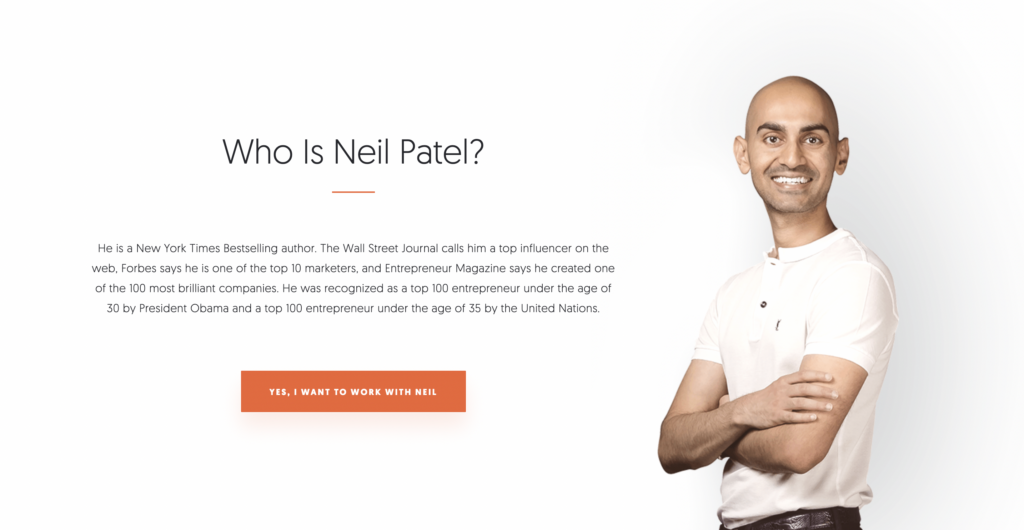
If you have anything to do with online marketing, you've heard of Neil Patel. You may or may not have heard of his various associations like Crazy Egg, Hello Bar, or NP Digital—but you'll have heard his name. That's because Neil Patel has done a fantastic job building his personal brand.
He focuses on connecting with his audience in a really simple way: showing his face. Even the favicon image for his personal website is a cartoon-like image of his face. You'll also see him all over his site, social media, and videos on YouTube.
In addition, Neil uses orange as his primary brand color and keeps that consistent across all of his platforms. You'll also notice he uses the same font on all his pages. This creates a sense of cohesion between his website, his YouTube, and other social media accounts and helps his brand become more recognizable.
2. Gary Vaynerchuck
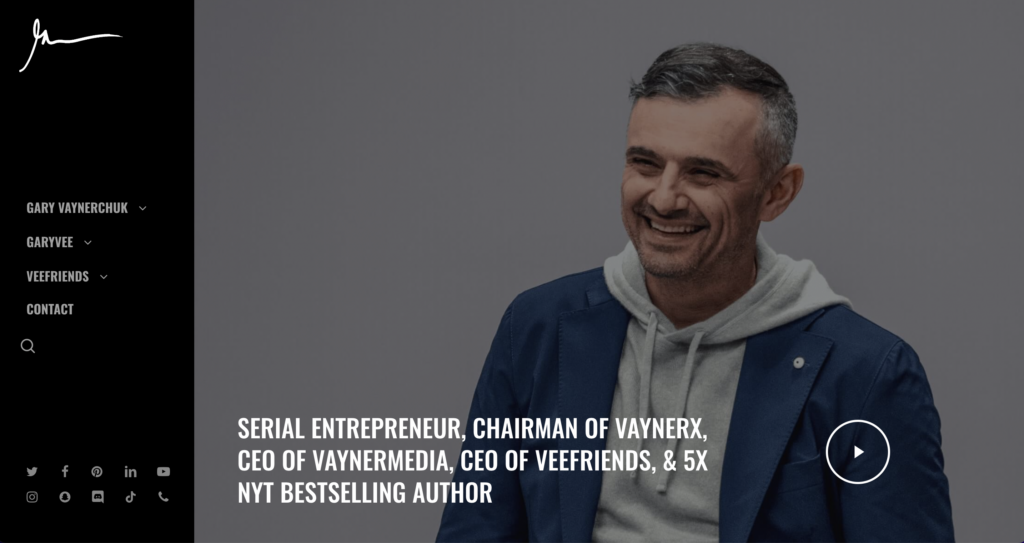
Self-proclaimed "serial entrepreneur" Gary Vaynerchuck is another great example of strong personal branding. He truly embodies his brand. From humble beginnings working in his father's liquor shop, Gary has since grown that business into a multi-million dollar empire.
Where Gary really succeeds with his branding is authenticity. He is honest and transparent with his audience and shares his story. He has never tried to be anyone other than who he is, so people trust him.
Like Neil Patel, he isn't afraid to show his face and share a bit of his personality to connect with his audience. His approach to business is very down to earth, and he doesn't censor himself, so whenever you hear him speak or watch one of his videos, he comes across a bit like an old friend.
And Gary has always been that way. When you compare his first video for WineLibrayTV to episode 1001, you see the exact same setup and casual approach. Consistency is another thing that is key to building a strong brand.
3. Marie Kondo
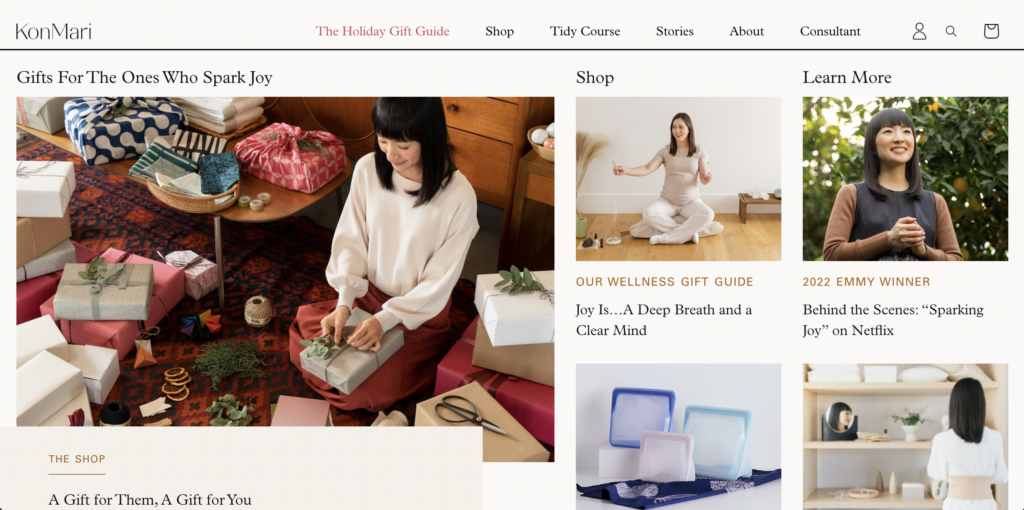
If you didn't spend 2019 asking yourself if half your personal belongings "spark joy" in your life, you were living under a rock.
Thanks to a hugely successful Netflix series called "Tidying Up with Marie Kondo" in 2019 and the follow-up "Sparking Joy with Marie Kondo" in 2020, the catchphrase became cemented in the minds of viewers around the world.
While it might not have been the brand statement Marie Kondo might have chosen, it was the brand statement the people chose for her. It was catchy, easy to remember, and encompassed everything Marie Kondo was trying to do.
Having a distinct phrase and appealing aesthetic helped cement Marie Kondo's brand.
4. Kim Garst
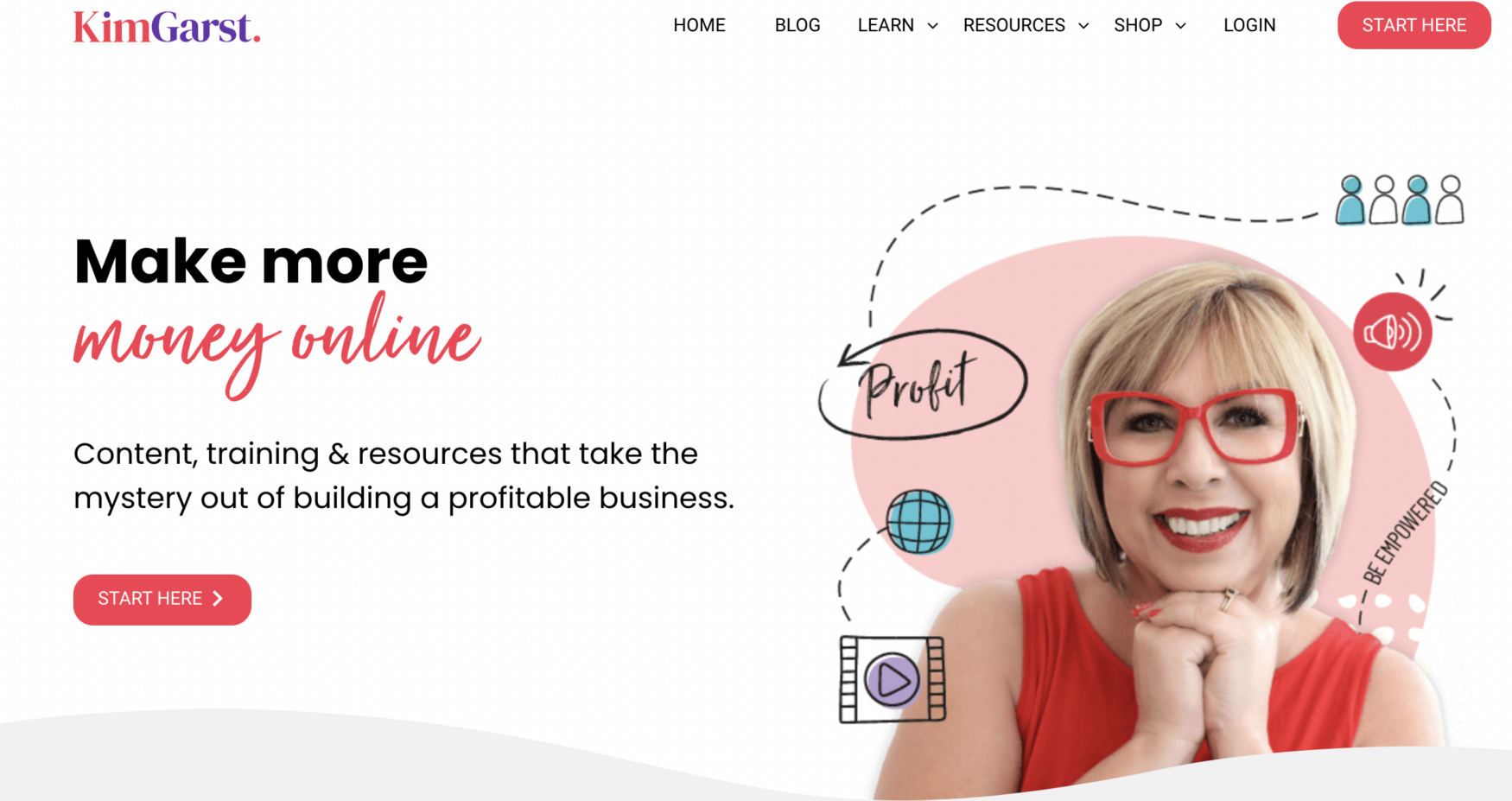
As the queen of social selling, it's no surprise Kim Garst has leveraged her social media profiles to build her personal brand.
Her webpage also features her face and bright, engaging colors to attract people. Your webpage aesthetic says a lot about your personal brand, and depending on your niche, it can also be a great place to showcase your skills.
In Kim's case, the fun colors and designs suit her market well and help her brand stand out amongst a sea of bland competitors.
5. Nomadic matt
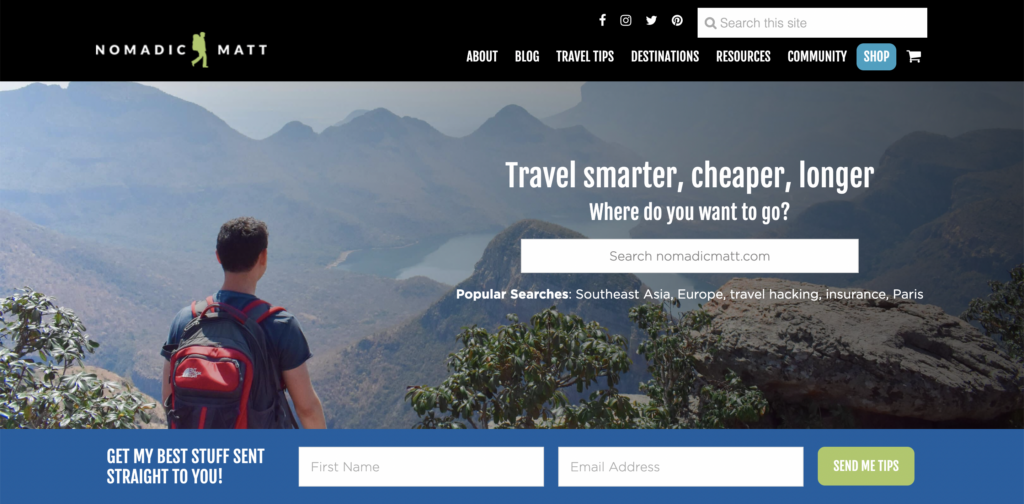
Matthew Kepnes, perhaps better known as Nomadic Matt, is a travel blogger and author. His website contains helpful travel tips, destination guides, and tricks for getting travel deals.
Since starting, consistent content has always been key for Matt to grow his following.
He's also employed a few digital marketing tricks, like a strong brand statement that addresses exactly what his audience wants to know: "Travel smarter, cheaper, longer." The last three words directly respond to his target audience's needs.
Another thing that Matt does is share his personal brand story in his blogs. Discovering travel at the ripe age of 23 and derailing his whole life to pursue something he was passionate about. This intimacy and transparency can go a long way in building a strong personal brand.
6. Ramit Sethi
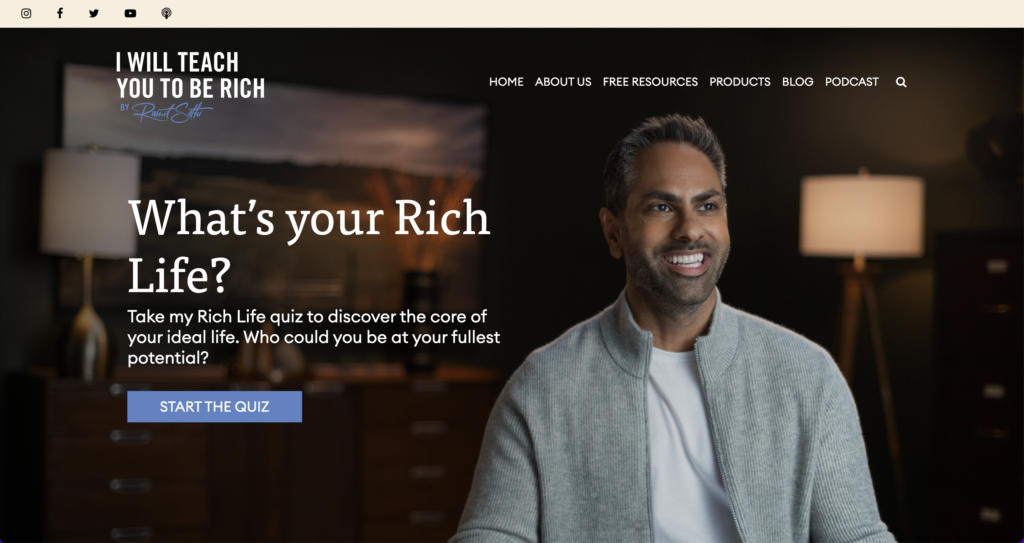
The man behind I Will Teach You To Be Rich built his personal brand by delivering consistent quality content that appealed to his audience.
If there is one lesson to take away from these personal branding examples, it's that content should always be an important part of your marketing strategy. You can have the best logo in the world, design a stunning website, and take professional headshots and none of it will matter if you aren't putting out content.
To connect with his readers, Ramit Sethi adds a few personal touches to his web design, such as his signature under his logo and his image on the homepage. He also has a great catchphrase, "rich life" that he uses consistently to reinforce his brand mission.
In addition, Ramit has a unique approach to what being "rich" means and has developed a laid-back tone in his content that appeals to many people who find worrying about finances stressful.
7. Kanye West
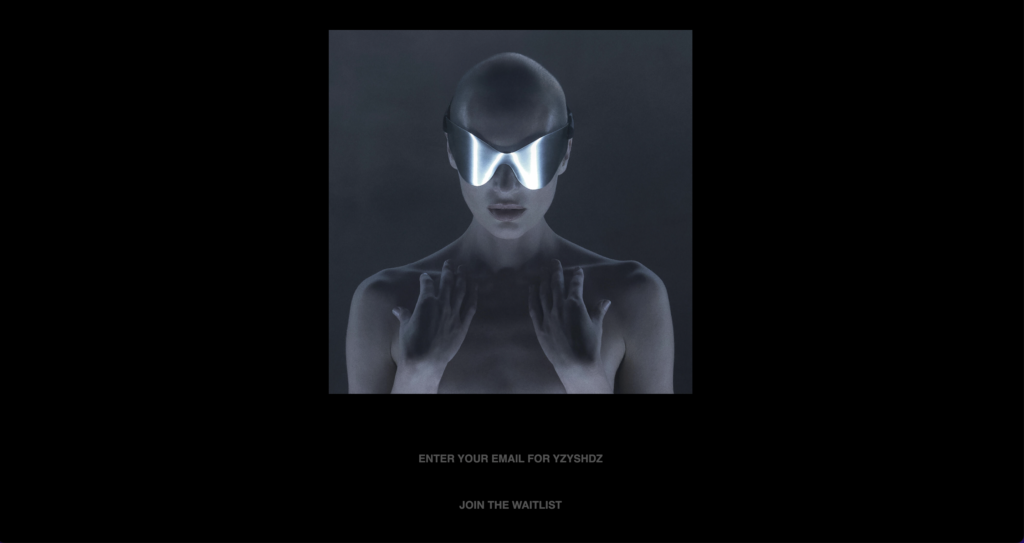
Yes, his superstar status has helped him become a household name, but there are marketing lessons to learn from Kanye West.
One thing that Kanye does consistently is go against the norm. This is an integral pillar of his personal brand. He stands out from the crowd by distancing himself from the expected.
Granted, this has become more and more extreme in recent years, but even from the early days of The College Dropout, Kanye has pushed boundaries.
Another marketing strategy he uses often is mystery/intrigue.
This may only work well because he's so established, but if done well, this is a great way to generate interest in your personal brand.
His website lacks almost any information, links, branding, etc. What is YZYSHDZ? I don't know. Did I put my email address in to find out? Obviously.
People don't like to feel left out. They will try to get it if they think someone else knows or has something they don't.
8. Huda Kattan
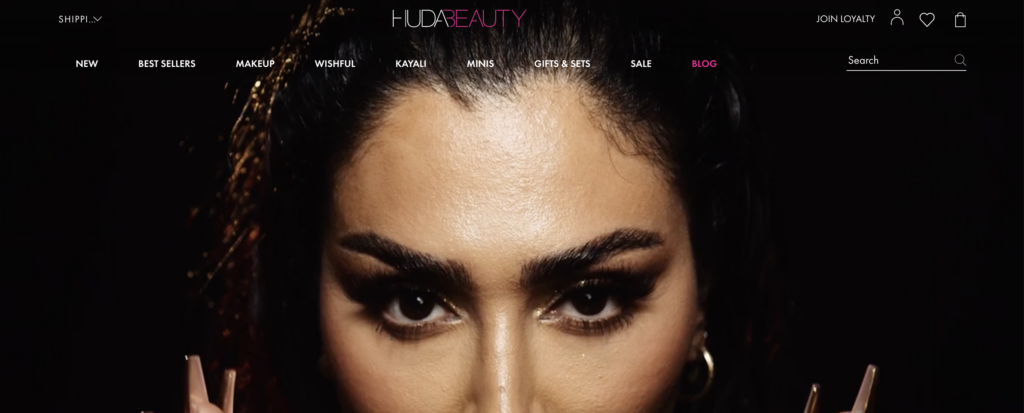
Huda is an interesting personal branding example. With many of these personal branding examples, the strategy is used for personal services, which is why freelancers and entrepreneurs focus so much on personal branding. But Huda proves it can be effective for products-based businesses as well.
Huda started off as a beauty blogger before launching her own makeup line. She kept her name associated with the line because she had built credibility and recognition with her personal brand.
I would argue that a clear brand statement is missing from Huda's brand strategy. It's not immediately obvious to a new comer what separates Huda Beauty from other makeup brands on the market.
9. Luvvie Ajayi
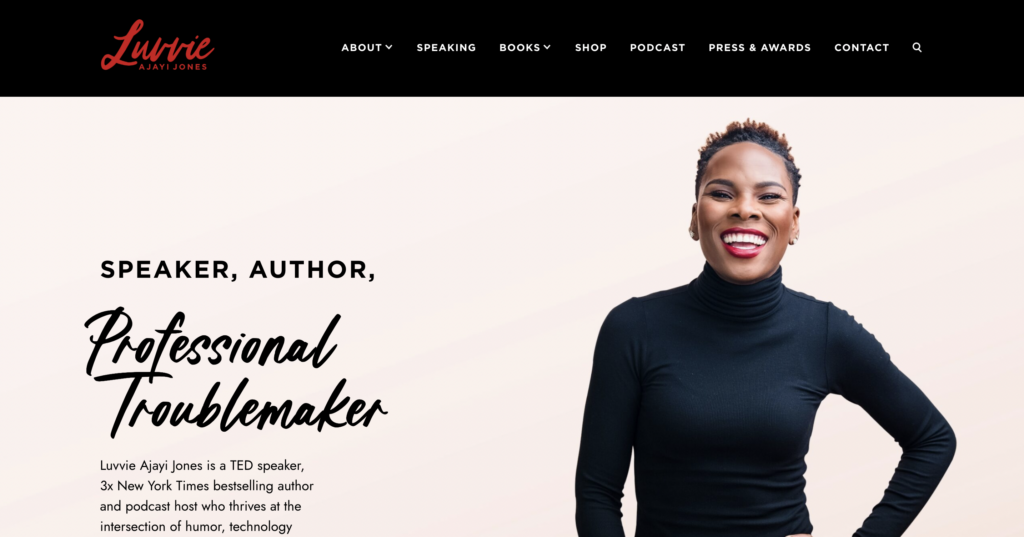
Another personal branding example that focuses on personal image to build recognition is Luvvie Ajayi.
A Nigerian author, Luvvie also uses her website to showcase her talents. After all, what would a writer's website be if it was poorly written?
Remember when you are building your own brand to capitalize on every opportunity to showcase your skills. If you're telling people you will help them grow their TikTok following, then make sure your brand's TikTok proves that.
Luvvie also uses fun play on words like "LuvLetter" for her newsletter to help show her personality online.
10. Seth Godin
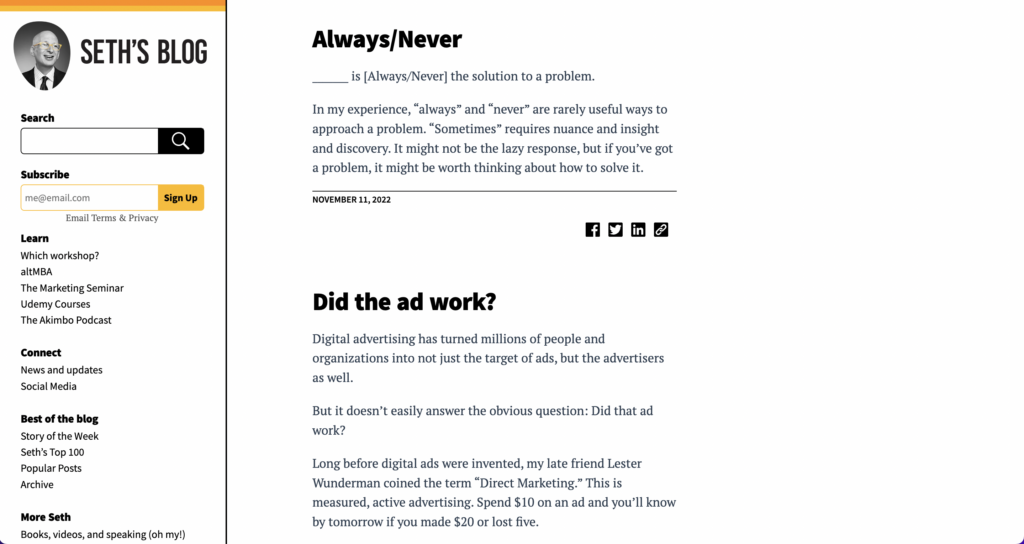
A strong personal branding example can be more than a stunning and expensive website. Seth Godin's blog is simple, not all that visually appealing, and arguably a bit weird to navigate.
But it's one of the most popular in the world, and when you Google "Seth Godin," it's the first thing that comes up, even before his personal website (which is a little nicer to look at).
All that proves is that, once again, consistent, quality, engaging content is the cornerstone of any successful brand marketing strategy.
Seth was inducted into the Direct Marketing Hall of Fame in 2013 and, in 2018, he was inducted into the Marketing Hall of Fame. So it's probably pretty reasonable to take a few marketing tips from the master himself.
11. Lolly Daskal
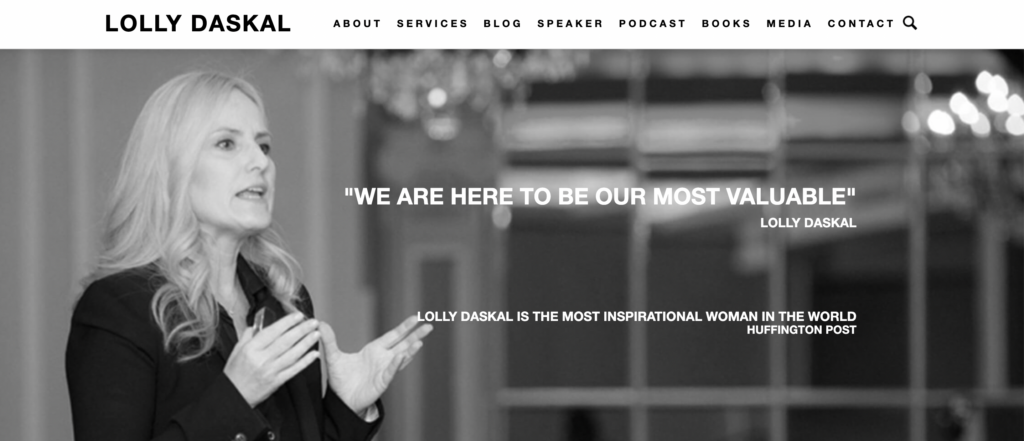
You could divide these personal branding examples into two categories: black-and-white websites, and websites with color.
Many people opt for black and white because it's clear, professional, and timeless. But it also makes it harder to stand out. Nonetheless, Lolly has managed to make a pretty big name for herself.
A highly sought-after leadership coach in the executive world, Lolly Daskal was crowned "The Most Inspiring Woman in the World" by the Huffington Post.
Her personal brand is built on consistency and recognition. She guest writes for a long list of different publications, speaks at several functions a year, and posts consistently on social media to keep her name fresh in the minds of her audience.
All of her tweets are also in the same style, instantly recognizable even if she didn't add her name to everyone.
12. Louise Pentland
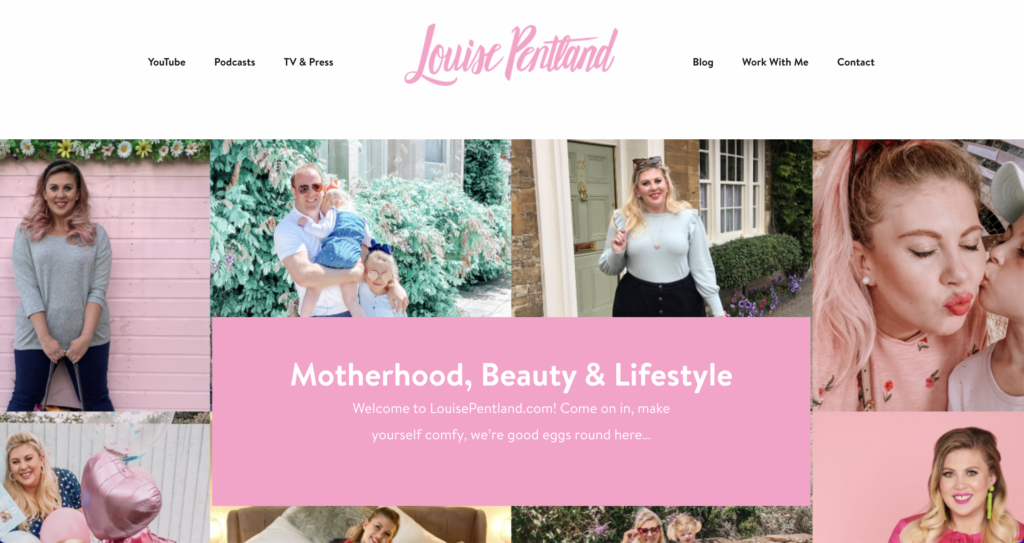
While having a website for your personal brand can bring credibility and make it easier to consolidate everything in one place—you don't need to have one right away.
You can start gaining momentum for your personal brand using social media or other outlets before investing time and money into a personal website.
That's basically how Louise Pentland started out. An English vlogger, Louise got her start on YouTube, growing her following to an impressive 2.23 million subscribers. When she first started uploading videos she didn't have a website, she focused solely on social media. It wasn't until after her name became recognizable that she launched her website.
Noticeably, however, her website lacks an "About Me" page. On the one hand, this is an oversight on her part as it's a great place to tell her personal story and connect with her followers. On the other, it encourages readers to watch her videos and check her social media to find out more. Clever marketing trick or not? You decide.
Learn tips on how to write your own “About” page.
13. Martha Stewart
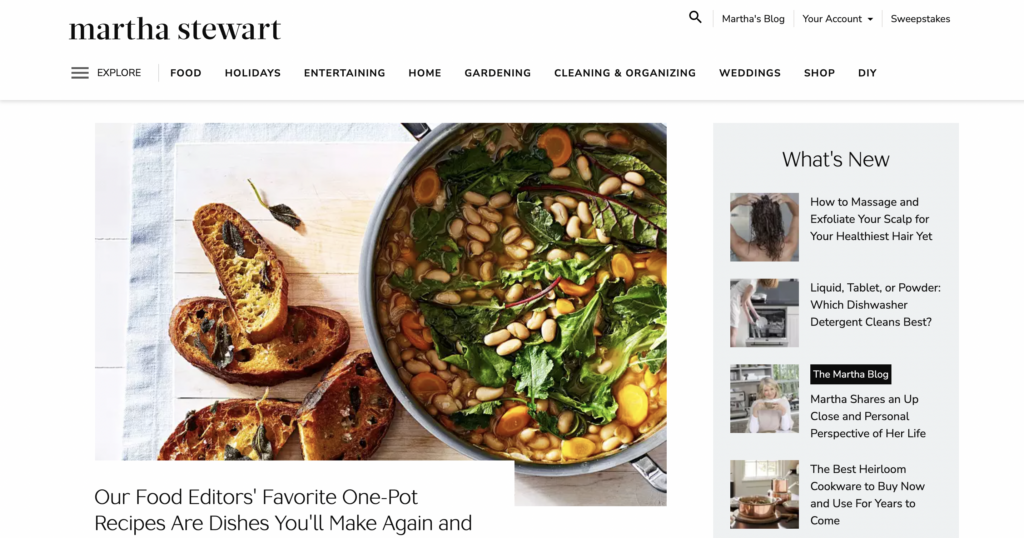
A bit of a fun one to look at is Martha Stewart. Her personal brand took a major hit when she was convicted of felony charges in 2004. Before that, her brand was built up on this image of your typical middle-class American woman.
Many people thought her conviction and subsequent stint in prison had soured her image beyond repair as it was so at odds with the personal brand she had built up. This is why being genuine and authentic from the start is so important.
After her release, Martha rebuilt her image to suit herself rather than people's expectations of her. She still pursued the things she was passionate about, like cooking and interior design, but became less censored and more honest in her approach.
She also built a strong collaborative relationship with Snoop Dogg, successfully bridging the gap between two markets to expand her target audience.
14. Aaron Ward
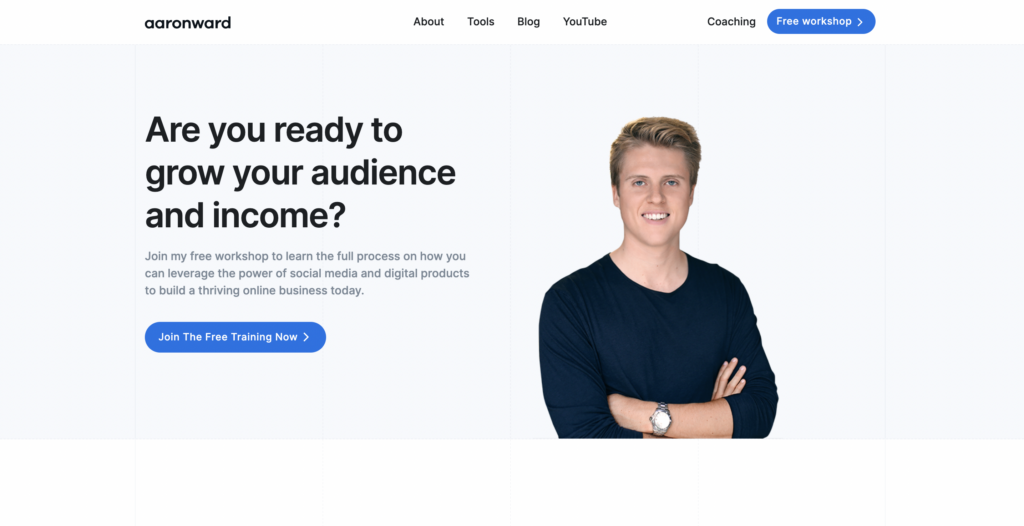
Some inspiration for the younger generation, Aaron Ward started his first eCommerce store when he was just 20. To market his brand, he took to Instagram and successfully grew his page and a few others to over 100k followers. Following his success, he launched his business to help others create and sell online.
Aaron uses a blend of personality and content to appeal to his potential clients to stand out amongst his competitors.
He uses the word "you" throughout his content to engage directly with his readers and has many testimonials on his page to lend to his trustworthiness. Additionally, he showcases some of the big brands he has worked with, like Red Bull and Spotify.
15. Tony Robbins
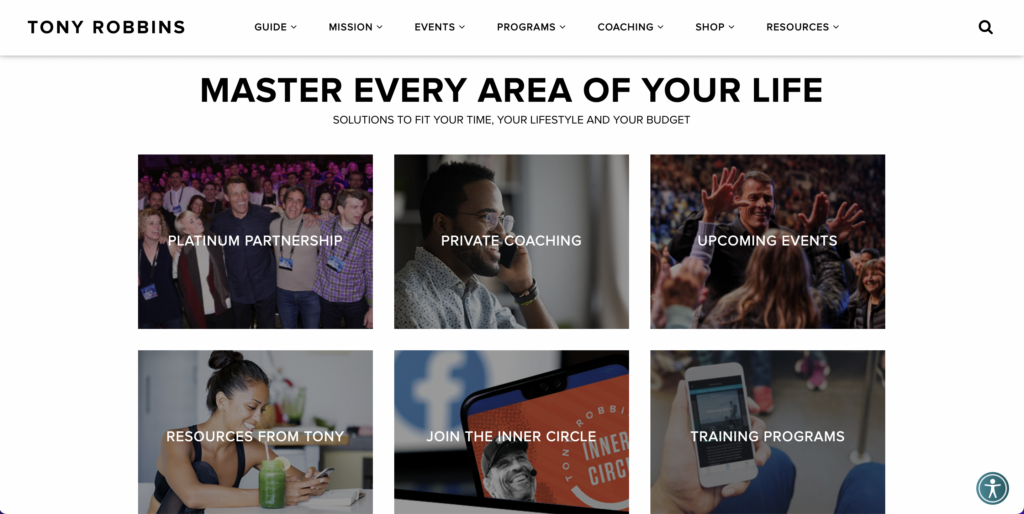
Showcasing the power of a strong personal branding statement is none other than Tony Robbins.
"Master every area of your life." I mean, yeah, obviously I want to do that. Let's go.
Simple, easy to remember, and as clear as you can possibly be. I'd easily argue that personal branding examples with a concise and memorable brand statement are that much stronger. In comparison, Tony focuses less on appealing logos and choosing color schemes, but that's fine because it fits his market.
If there's one thing you take away from this article, I hope it's to research your niche and make choices that will appeal to your target demographic.
16. Marie Forleo
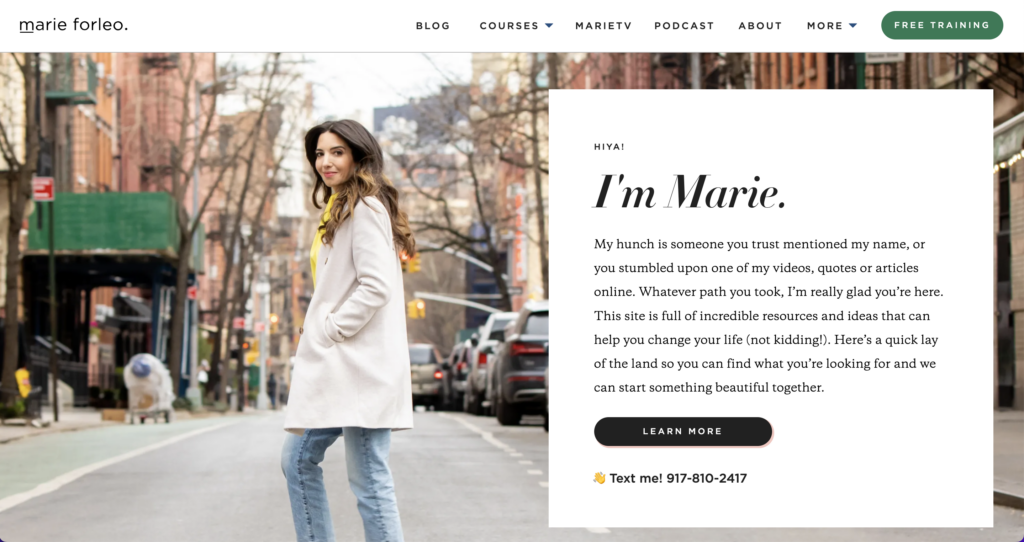
It would be remiss to talk about personal branding examples without bringing up Marie Forleo. Marie has built a wildly successful personal brand by implementing some great tactics in her marketing strategy.
Her webpage is visually appealing, there are lots of calls to action and pictures of Marie herself, and the whole thing is really clean and easy to navigate. That, coupled with a fun color scheme, effectively gets you excited about Marie without even really having to read very much.
I love the little personal touch she has on her homepage.
Normally you'd see a box to join an email list, or a contact us form, but she's got a little emoji and a phone number to text. Yes! Way to appeal to your market Marie, we text. We don't call. We maybe email if we have to. It also just comes across as a lot more personal.
17. Tim Ferriss
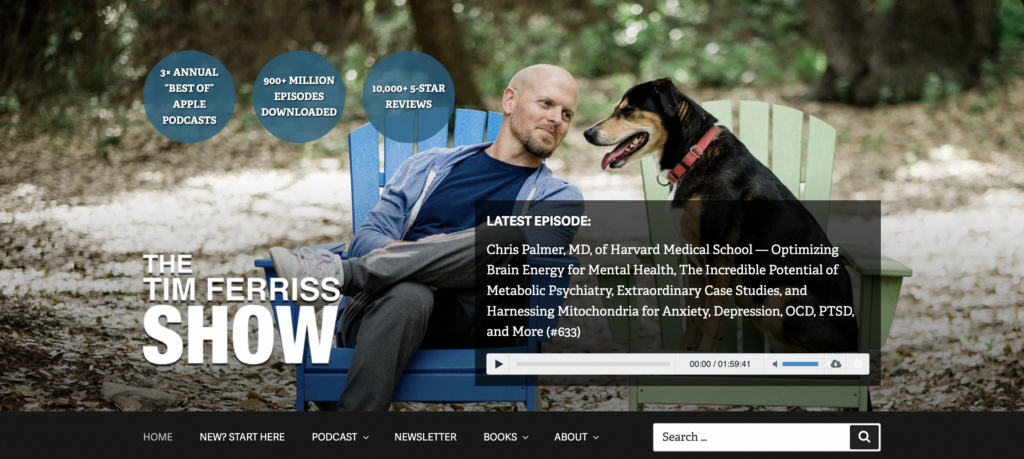
Personal branding examples like Tim Ferriss are great because they are like the ultimate guide to building a personal brand. Tim ticks many boxes for how to build your brand successfully, and it's useful to see what that looks like in real life.
Tim is an American entrepreneur and author who, if you haven't heard of, you should have heard of. His Twitter account was named one of Mashable's top 5 "must-follow" accounts for entrepreneurs alongside Richard Branson and Jack Dorsey. You can see that social media is a very important channel for him to get his brand out there.
In addition, a lot of Tim's following is thanks to his hugely successful podcast, The Tim Ferriss Show, but he also regularly posts on his blog.
You'll also notice that Tim uses social proof at the top of his homepage to showcase his credibility. Plus, he has an image of him and a dog. Let's assume it's his. Regardless, people love dogs, and even though dogs have nothing to do with business, the image makes Tim more familiar and lets people relate to him better.
18. Larry Kim
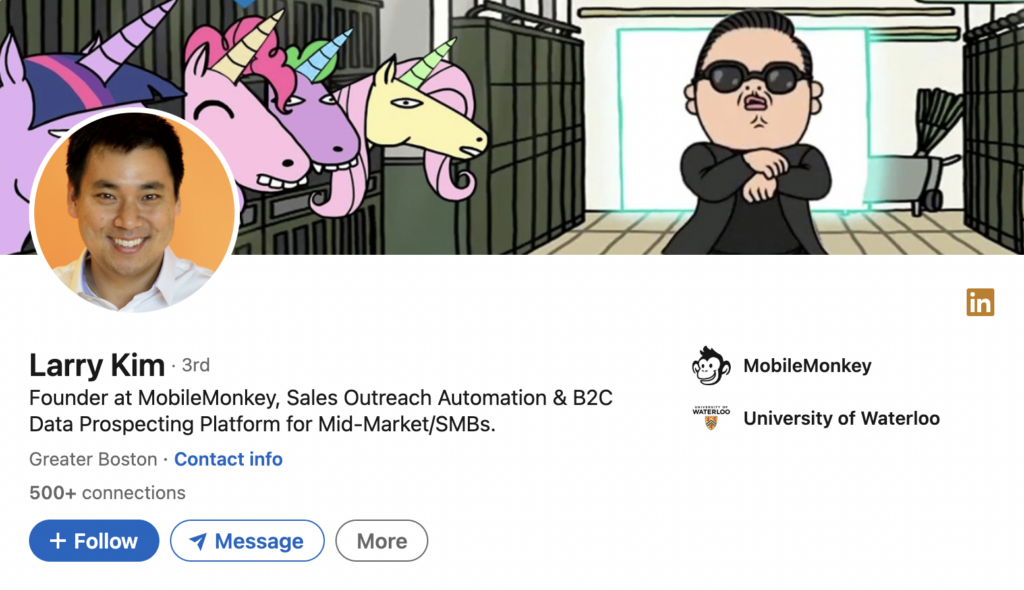
Larry Kim is an example of how building your personal brand can in turn help boost your businesses. And also how picking a motif can help you market yourself.
Many people in the marketing world know Larry Kim as the unicorn guy. Across all of his social media pages, you'll find some reference to unicorns, all thanks to his powerful brand statement: "Be a unicorn in a sea of donkeys."
Sure, it's a silly statement to make, childish even, but it gets his message across and is memorable. You need to be prepared to be different to distinguish yourself from everyone else.
It might not be a slogan that works in the finance industry or the medical field, but marketing is supposed to be fun. Marketing is supposed to be different and loud, and Larry gets that all across with a single image.
19. Simon Sinek
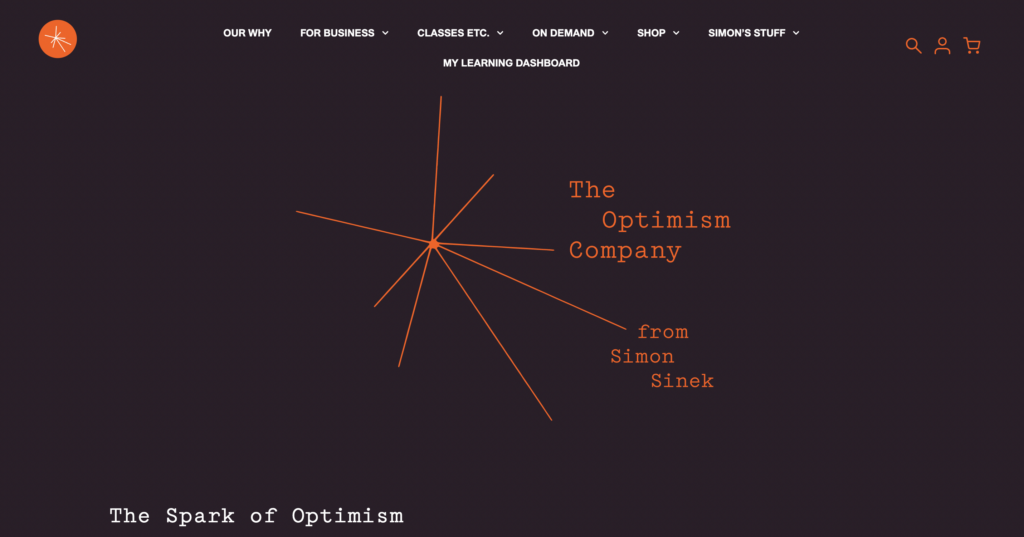
Unlike many other personal branding examples, Simon's homepage does not feature his personal image as the first thing you see. Instead, he keeps it really simple with an enlarged image of his logo and name. Scroll down a little and you get a headshot plus a personal quote that doubles as a sort of brand statement.
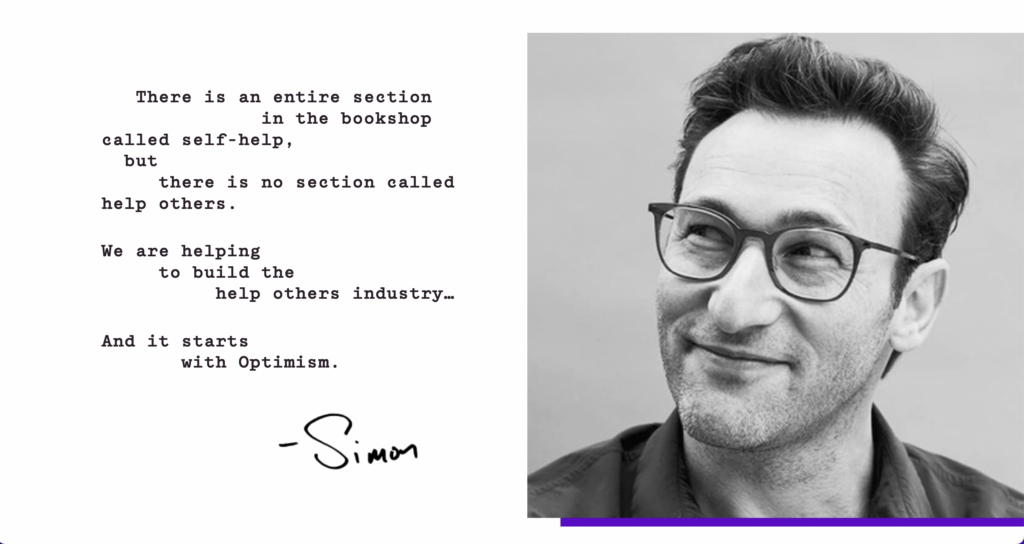
This works well as it immediately encourages people to scroll. Humans are innately programmed to respond to other people's faces. So when we visit a personal brand website, we are expecting to see a face. When we don't, we go looking for one. When we are immediately rewarded by scrolling just a little, we want to scroll more to see what else we find.
Simon also uses orange (you'll notice it's a popular choice for upbeat brands) as his brand color. Choosing your brand colors requires a bit of thought as different colors can invoke a certain response from your audience. You want to make sure it suits your brand values.
I'd suggest reading more about color psychology to find a color that works well for you.
Additionally, Simon is super active on YouTube, a great social media channel for personal brands.
Read more on is YouTube social media and find out how to leverage the platform for your own needs.
20. Richard Branson
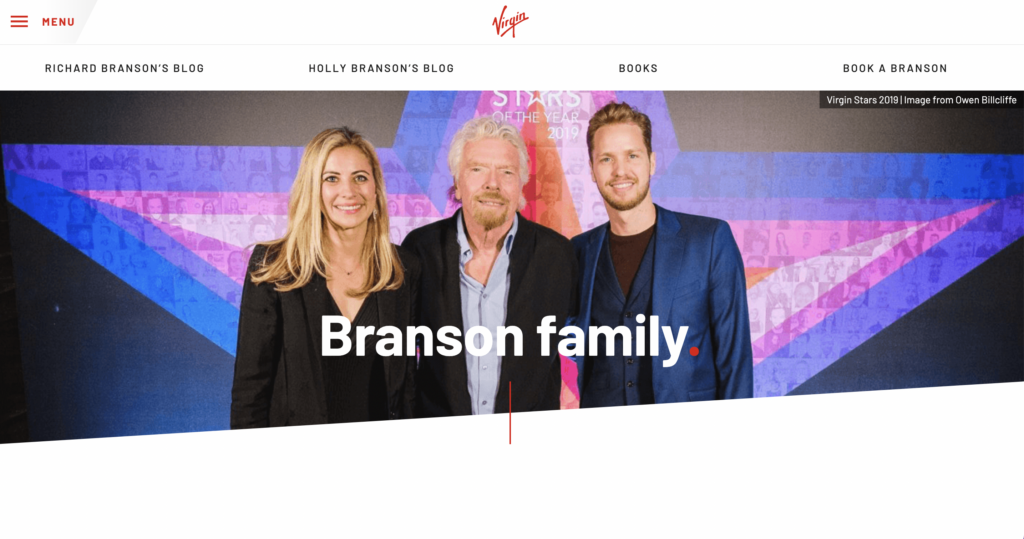
Richard Branson is an interesting case. This is one of the personal branding examples where you can see a personal brand develop alongside a business brand.
The billionaire is probably best known as the founder of the Virgin Group (Virgin Airlines, Virgin Mobile, etc.). However, there is a good chance that most people will recognize his name or his face without connecting it to Virgin.
He built his personal brand by showcasing his passion and personality across social media, through speaking engagements, and tv appearances.
The most important lesson to be learned here is that true passion is infectious. If you build your brand around things you genuinely care about and are interested in, you have a better chance of success.
21. Pat Flynn
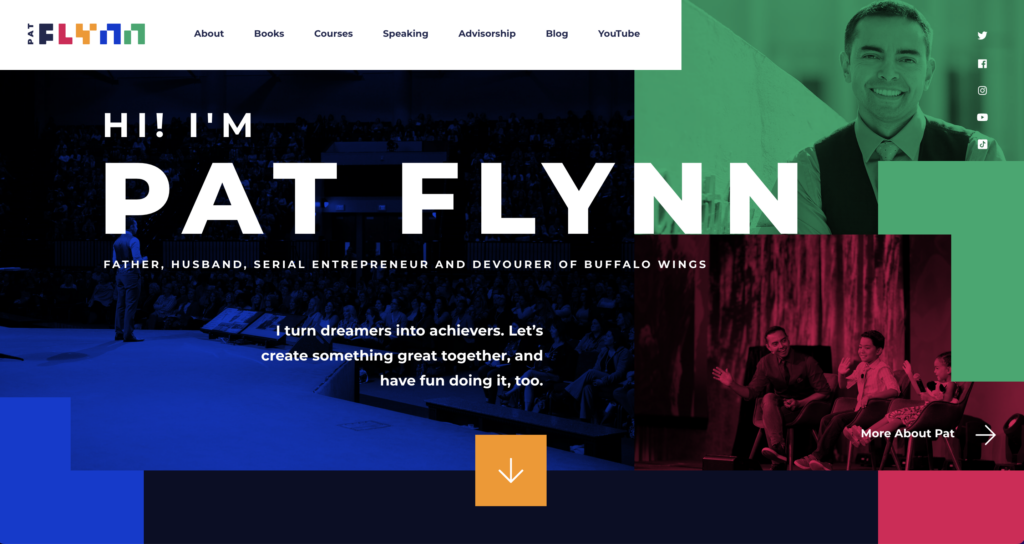
Pat Flynn's brand statement catches your eye in a little bit of a different way. The first half, "father, husband, serial entrepreneur" is a bit overused, but the second half is where he gets your attention.
On his webpage, the second half of his brand statement scrolls to reveal different personal aspects. "Devourer of buffalo wings," is just one, others include "lover of dogs named Gizmo," and "adult fan of lego." By doing this, Pat didn't have to brainstorm the perfect catchphrase. His brand statement is unique because it's personal.
Similarly, he shares a lot about his personal "origin story" (see what he did there?) to get his clients to feel connected. Like many other personal brand examples, his authenticity is crucial to his success.
Another thing Pat does to market his brand is to use social media to engage with his audience. He is active on YouTube and Twitter, showcasing his image and sense of humor.
How do You establish a personal brand?
To market yourself, you need a personal branding strategy. A strong brand can help convince a potential client to choose you over your competitors.
Your personal branding will often come through best on your social media profiles. However, for credibility, having a website is also important.
Some important steps to establishing a personal brand include:
- Personal brand statement. One of the most important things you can do to distinguish yourself and your brand is to develop a personal brand statement. Think of this as your catchphrase. It should say something about what you can do, and why your approach is unique.
- Logo and brand colors. Cohesion is crucial for developing a recognizable brand. Designing a logo is the first step in making yourself familiar to your audience. This also includes choosing brand colors to incorporate throughout your website, marketing, and social media.
- Set of values. Beyond the visual aspects of creating a successful personal brand, having a set of values you stand for can help your audience resonate with your message.
- Brand goals. Not to be confused with brand values, your brand goals are what you want your brand to accomplish. When considering your personal branding strategy, lay out your brand's goals. What is your mission in developing a personal brand?
- Connect with your community. Last but certainly not least, engaging and connecting with your audience is the most important thing you can do to grow your name and your brand. Your branding strategy should include content marketing for your target audience to engage with. At the same time, you should be consistent with posting and responding to comments or feedback.
Consider starting a personal blog as a way to connect with your audience and boost your personal brand.
Tips for improving your personal branding
Whether you have already tried branding yourself and need some tips on how to succeed or are looking to get started building a strong personal brand—here are some things to keep in mind when developing a personal branding strategy:
- Be specific. Carve out a micro niche for yourself, the more specialized you are, the more you stand out.
- Be authentic. You need to live your brand. Steve Jobs can be someone other than Apple, but Donald Trump will always be Donald Trump. Your personal brand should be an authentic representation of your true self.
- Keep your brand statement clear and concise. When someone reads your tagline, they shouldn't be left wondering what you do. It should also be short enough that they can remember the whole thing.
- Respond to your audience. Engage with your community and be ready to adapt and adjust to meet their needs and expectations. Be yourself, but flexible enough to meet the demand in your market.
- Use social proof and numbers to your benefit. People are always more likely to follow the crowd if you have testimonials pages, get them up on your site, or post them on social media.
- Treat your brand like the business it is. Set some KPIs and decide how you will measure success and stay on target.
- Create positive impact. People are drawn to positivity. Think social media giveaways, useful blog content, community sponsorships, participation, etc.—how can you positively impact your target audience?
In Conclusion
When it comes to successful personal branding, nothing is more important than just being yourself. People can tell when you're being inauthentic and will be put off.
Consider these personal branding examples and what strategies they've used to make their own brands recognizable and relatable. A great personal brand should resonate with people and clearly state what you can do.
From brand colors to brand statements, there are many different ways to make your personal brand unique and appealing.
Then just get started. There's nothing like a little market research to see how your brand will perform. Be bold and tweak things here and there until you feel your personal brand best reflects you and attracts the right people.
If you need more inspiration for how to design your own website, check out these personal website examples.
Want to learn step-by-step how I built my Niche Site Empire up to a full-time income?
Yes! I Love to Learn
Learn How I Built My Niche Site Empire to a Full-time Income
- How to Pick the Right Keywords at the START, and avoid the losers
- How to Scale and Outsource 90% of the Work, Allowing Your Empire to GROW Without You
- How to Build a Site That Gets REAL TRAFFIC FROM GOOGLE (every. single. day.)
- Subscribe to the Niche Pursuits Newsletter delivered with value 3X per week
My top recommendations
















